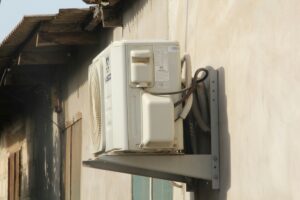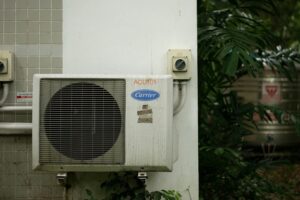Hot days, cold days, and it all boils down to one thing: air conditioning. It is not only in summer that we remember to have our workplace, premises or home air-conditioned, but also in winter.
Air conditioning is so important in our daily lives that without it we can’t even concentrate.
But our equipment can break down and we have to give it the importance it deserves. Do we know what are the main faults of an air conditioner? How do I check it? Can I fix it myself or better call an expert? Here is what we tell you.
How do we check our air conditioner?
If we think that our air conditioner may have some kind of breakdown, before performing a thorough review, we must take a series of precautionary measures:
- Cut off the power supply and unplug the equipment, to avoid any damage.
- Do not wet either the indoor or outdoor unit when cleaning. A damp cloth is sufficient.
- To be more specific, when cleaning the units it is advisable to use a soft dry cloth or a cloth slightly dampened with water.
If we consider that the problem may be that it is not cooling, we check windows and doors, that the appliance is turned on and that the filters are in optimal hygienic conditions.
If this does not bring the solution, we continue analyzing.
Main problems of an air conditioner
An air conditioner without proper maintenance can generate some long-term problems that we can not always solve without the help of a professional.
To be able, at least, to locate what may be the problem we will list the most common failures:
1. Equipment without gas due to a leak or a lack of refill.
2. Water flow noise during operation.
3. The compressor does not heat. In this case, the owner of the air conditioner what he observes is that the equipment has stopped cooling.
4. The unit does not turn on.
5. The compressor does not start. This is observed because the compressor does not emit any sound, the power supply does not reach the compressor or is insufficient.
6. Improper electrical connections. This is usually due to common problems such as a cable that does not fit properly into the socket or poor condition of a pipe.
7. Compressor failure.
8. The equipment does not cool. As we have said, this is a very common failure.
9. Defective compressor.
10. Low voltage or incorrect voltage.
11. Improper connection.
12. Thermal protector other than specified.
13. Water dripping from front panel.
14. Faulty thermostat or temperature sensor.
15. Problems with circuit sizing (amps).
16. Instantaneous gas in liquid line.
17. Improper piping design. This may be due to high vertical height.
18. Equipment turns on and off frequently.
19. Contamination in the system. Moisture in the system can be due to a number of different cases.
20. Power element failure or loss of charge.
21. Low condensing pressure. For air-cooled condensing units, occurs when the pressure control system is defective or improperly adjusted.
22. Unit does not turn on. This may be due to the unit not being plugged in all the way, the circuit breaker is tripped or, as a major fault, the fuse is blown.
23. Refrigerant or oil overcharge.
24. Excessive oil accumulation in the evaporator.
All these problems can arise when we have an air conditioning machine, and especially if we do not take care of it properly.
Solutions to the main problems of an air conditioner
Once we know what the main problems are and, knowing that most need an expert to repair it, let’s see what the solutions to each of them can be:
- Equipment without gas due to a leak or a lack of recharge.
When an air conditioner is without gas by a possible leak should first examine whether there really is such a leak. Once located we proceed to the gas recharge of the same.
If the problem is not the leak but the lack of recharge, the process is reduced to perform only a gas recharge.
2. Water flow noise during operation.
The sound is usually caused by the compressor or evaporator. However, this does not really imply that the equipment is faulty, it is simply that we have made a bad choice in purchasing a model that is not silent.
- The compressor does not heat.
Observing that the air does not cool makes us think directly in a compressor problem. The solution comes from the hand of locating the possible leak and weld the hole that is causing the outflow of gas. Then we should recharge it in order not to have a later problem.
Very old equipment needs to be renewed to R-32 gas, a non-polluting gas that we use in Grupo Diansa.
- The unit does not turn on.
When the unit does not turn on it is usually due to an oversight. The checks that we must make are:
- Check the current
- Check the connection
- Check the operation of the protection circuit
- Check the voltage of the unit.
In addition, to make sure that everything is correct, the installer must subsequently check the operation of the machine.
- The compressor does not start.
When the compressor does not start there are a wide variety of causes and solutions. Among them we can find:
- We check that the equipment is plugged in and with the right voltage. It is possible that the failure comes from here.
- We observe the state of the cable. If the cable is in bad condition this may be the problem.
- Check the thermostat.
- Check the defrost timer.
- The motor should turn, so it would be helpful to check it.
- Check the condition and specifications of the compressor relay, start capacitor and run capacitor.
- Improper electrical connections.
We call a technician and this way he should disconnect the wires and make a proper installation. In this way, we can make sure that they are installed correctly.
General check-up
To prevent all these problems from occurring, it is advisable to perform a general check-up. The recommendations to be followed in the check-up are the following:
- Initial data collection
- Remove the service cover
- Secure the filters
- Secure the electric current
- Washing of coils
- Tray washing
- Check motors
- Checking of electrical circuits
- Paint check
All this can save you a lot of problems in the long run.
Text taken from: http://diansa.com






